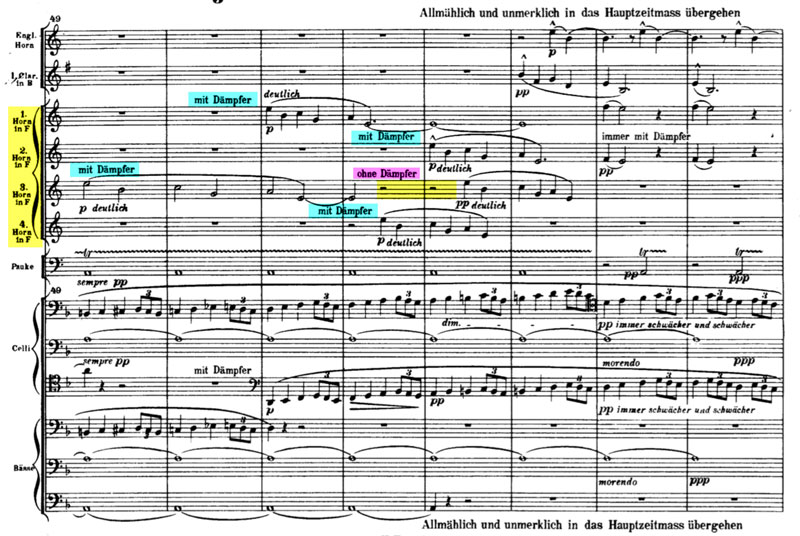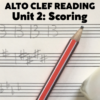Orchestrators should learn the difference between stopped notes and muted notes on the horn, and also how to ask for mutes and give time for their installation.
One bit of common knowledge in older orchestration manuals like the Piston is that composers don’t seem to differentiate between stopped notes and muted notes in scores, sometimes using them interchangeably. Yet there is a definite difference between the sounds. Stopped notes have an urgent, crisper sound in attack – and a sinister, somewhat oozing sound in smoother passages. Muted notes have a different shade, more similar to a muted trombone, with some lower overtones more in abundance, and a meatier tone – yet not so penetrating.
In all things to do with horn, the composers to study are Mahler and R. Strauss, if you really want to know everything a horn can do – because they make a hornist do everything, and yet write for the horn so well that its players are happy to give it everything no matter what the risk. Both Mahler Symphonies 1 & 2 are full of areas in which both mutes and stopping are used, and the difference between the two is integral to the sound. Luckily for you, all copyright has expired on Mahler’s works, so these scores are available on IMSLP.
Yesterday, I referred to hornists occasionally stopping notes when a mute is indicated. They will do this under two conditions. A.) They sense that the composer doesn’t actually know or care about the difference, which is actually a bad position for the composer – losing confidence from your players because of your incompetence is never good. B.) The composer simply has not given the player time to get the mute ready. No hornist wants to slam the mute into the bell and risk denting their instrument over and over, just because you couldn’t be bothered to set up the situation correctly.
There’s a direction in horn technique called “hang mutes.” The horn mute has a little strap on its outer surface that may be hung off the player’s wrist. The right hand continues to shape the sound, then will reach down, grab the mute, and slip it into the bell. Often times, this direction will be written in parts by the players themselves, but an orchestrator should know about the option, and mark it when necessary (or at least be aware that the procedure will happen depending on how the part is scored).
In the excerpt below from Mahler 1, Movt. 1, the third horn player is being asked to first use a mute (“mit Dämpfer”), then remove it and play on. In this case, where the player really has only about three seconds from the end of the half-note in bar 52 to the high E in bar 53, hanging the mute would be advisable. You should have a listen to this passage here, to hear how mutes sound when they’re used in the correct way, and also to hear the contrast there as the third horn plays a soft unmuted echo while the other players keep their mutes.










One response to “Horns – Differences Between Stopping and Mutes”